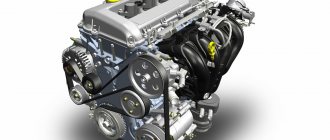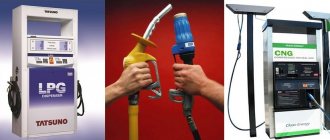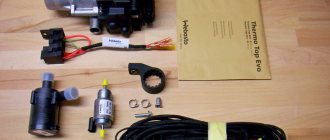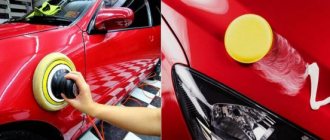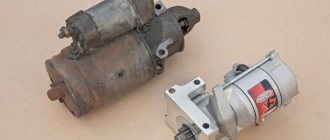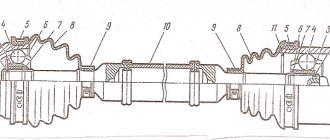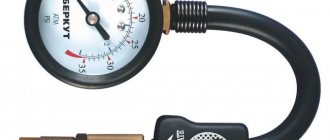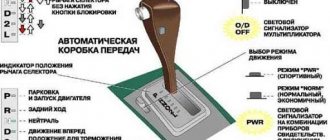Webasto and Hydronic: constant competition
Let's start with the fact that the most popular and reliable solutions on the market of pre-starting autonomous heaters are produced by German companies. We are talking about the well-known Webasto Gruppe (Webasto heaters) and Eberspächer Climate Control Systems (Hydronic engine heaters).
Let us immediately note that both Webasto and Hydronic today are high-quality products that are distinguished by the enviable reliability of all elements, and are also supplied in a complete ready-made kit for successful installation on different types of vehicles.
The fact is that Eberspächer engineers programmatically increased the power of their heaters in order to better present the product against the backdrop of Webasto. At the same time, such firmware led to problems and failures of the control electronics.
As a result, the heater “fell” into blocking mode. Also, structurally, Hydronic at that time was noticeably different from Webasto, and not for the better. Ultimately, practice showed that Eberspacher Hydronic heaters were less well adapted to operating on low-quality fuel and often became clogged. For this reason, it was necessary to periodically clean the mesh installed in the area of the flame tube; problems arose with glow plugs, etc.
Chinese analogues
Of course, the entrepreneurs of the Middle Kingdom did not stand aside in terms of the production of such purchased devices as engine heaters. The most popular Chinese analogue of Webasto on the Russian market is Beliff.
As you know, Chinese engineers very often simply copy the design of equipment from famous brands. The result is a fairly high-quality device, but still inferior in reliability to the original. In any case, assembly control at Chinese enterprises is, of course, much lower than at European ones. In addition, the materials used in the production of various types of equipment in the Middle Kingdom are often not of particularly high quality. Belif heaters were created in China in much the same way. In essence, this is the same Webasto, but of slightly lower quality. Belif heaters cost around 30 thousand rubles.
Many Russian motorists are also interested in what kind of Webasto analogue for diesel exists on the market. Very often in this case, Belif brand devices are used. Not bad for diesel engines, for example, the Belief Water D5 12V heater is suitable. This model costs about 31 thousand rubles on the market.
Features and differences of Hydronic and Webasto heaters
So, let's start with general information and the complexity of selection, and also touch on the thermal power in different operating modes of the heaters. At the same time, we will touch upon the issue of fuel consumption and loads on the on-board network, the intensity of battery discharge, overall dimensions and a number of other important parameters.
- Webasto preheaters are offered for both gasoline and diesel engines. For passenger cars, the company offers different models that differ in power.
As an example:
- Webasto preheater for passenger vehicles whose engine capacity does not exceed 2.0 liters;
- heater for cars with an engine from 2.2 liters;
- autonomous heating boilers for commercial vehicles and SUVs with an engine capacity of 4.0 liters or more, etc.
Webasto heaters can additionally be equipped with a programmable timer, remote control, and GSM module. Among the main disadvantages, consumers note the high initial cost of installation kits, spare parts and additional equipment, and the freezing of liquid crystal screens on standard controls in severe frosts.
- As for Eberspächer and Hydronic, in the manufacturer’s catalog you can also find various models for various types of vehicles and power units installed on vehicles. Retrofitting options also include different heater controls.
- Hydronic 4 heater for cars with a volume of up to 2.0 liters;
- Heater Hydronic 5 for vehicles with engines over 2.0 liters;
- Hydronic MII model for trucks, commercial vehicles and special equipment with engines of 5.5 liters or more, etc.;
Let's move on. As mentioned above, today the main differences between Webasto and Hydronic for the average buyer come down to ease of selection, affordability, features and ease of installation. Also, special attention is paid to the warranty policy, the number of service centers, the general maintainability of heaters, the simplicity and cost of post-warranty repairs and maintenance.
As for selection, it is much easier to decide on the required model in each specific case when choosing from Webasto catalogs. In this case, you need to take into account the main differences in power (4-5 kW) and type of internal combustion engine.
Please note that when selecting from Eberspächer products, additional difficulties may arise, since there are more types of boilers (spaced and non-spaced), standard, Compact/Comfort series, etc. Then from each series you need to select a suitable 4 or 5 kW heater.
Such features indicate that in the case of Hydronic, as a rule, additional professional advice is required. You should also understand in more detail the intricacies of installation and other nuances of installing this or that type of heater from this company.
Heater installation
Note that the basic installation of Webasto and Hydronic does not imply any significant differences, since these devices operate on the same principle. At the same time, the Eberspächer installation kit can be considered more complete, which somewhat simplifies installation in some cases. We also add that the Webasto heater is packaged much better.
As for the individual installation features, I would like to separately mention some points. Taking into account the fact that each manufacturer offers several options for heaters for gasoline and diesel internal combustion engines, for objectivity it is necessary to compare two devices with similar characteristics (for example, Hydronic 2 Economy and Webasto ThermoTop).
In turn, the design of the Hydronic model compared with its competitor has three nozzles, not two. There is one input nozzle, but two output nozzles. This feature allows you to install this heater in different ways.
- The first method is similar to installing Webasto, that is, one of the outputs is silenced, and the heater itself warms up the engine circuit and the heater radiator.
- The second solution allows you to connect the heater so that the main emphasis will be on driver comfort and warming up the interior space, rather than the internal combustion engine. First of all, the heater radiator circuit warms up, while the power unit circuit is turned off.
When the interior heating circuit is heated to a temperature of about 65 degrees, and this happens quite quickly, the circuit is then opened to the engine, without significant heat losses. According to this scheme, two circuits are heated with priority for heating the interior.
- Another connection option allows you to prioritize warming up the engine, and only then the interior. The scheme resembles the second method, but the internal combustion engine circuit warms up first, while the interior heating is turned off.
After the coolant in the engine circuit has warmed up to the required temperature, parallel heating of the cabin circuit begins, that is, two circuits are activated. This connection method allows you to warm up the internal combustion engine as quickly as possible and facilitate cold starts.
We also add that many installers note the lower performance of the Hydronic metering fuel pump compared to Webasto. Based on this, during installation it is necessary to take fuel from the fuel tank only through a special fuel intake.
Productivity and efficiency
Now let's talk about efficiency and power. Based on the data provided by the manufacturers, then the new generation of Webasto heaters is more economical compared to its competitor Eberspächer.
A comparative analysis of the various characteristics of two similar competing models Webasto E and Hydronic 4 allows us to draw the following main conclusions:
- the Webasto heater has smaller block dimensions, that is, it is simpler and easier to install the device;
- immediately after starting and starting to warm up, Hydronic provides better heat performance;
- The power consumption at maximum performance is lower for Webasto. This means that the device does not consume battery power so intensively;
- the Webasto heater looks like a more economical solution in terms of fuel consumption;
Briefly about the criteria for comparing heaters
Before comparing anything, it would be a good idea to decide on the most significant criteria on the basis of which it will be possible to draw objective conclusions. In the case of preheaters, the most important points for the car owner are the following:
- Prices.
- Thermal power.
- Fuel type.
- Fuel consumption.
- Battery power consumption.
- Dimensions.
- Weight.
Everything is clear with prices, but it’s worth going over the other criteria in more detail.
Thermal power - indicates how much heat the heater generates per unit time. The speed of warming up the engine and interior before starting depends mainly on this characteristic. That is, the efficiency of the device.
The type of fuel determines which engine the heater can be installed on. All of the manufacturers presented above release serial models onto the market for both gasoline and diesel engines.
On average, in winter, the heater runs every morning from half an hour to an hour, consuming fuel from the tank. Therefore, one of the most important selection criteria is its consumption.
The pump and fuel ignition system in the combustion chamber of the heaters are powered by the car's standard battery. And since in winter it already experiences severe loads, the additional power consumed plays a very important role.
The dimensions of the heater affect how easy it is to install the device under the hood and how much space it will take up there. The weight of branded heaters is not too large, so you don’t have to pay much attention to this characteristic. But it won’t hurt to know about it.
There are a number of reasons why you should install an engine preheater in conjunction with autostart. Read about this in the article: “Webasto + Autostart”. From the article you will learn 10 reasons why you need to install Webasto and connect it to an alarm system with auto start.
Hydronic, Webasto or Binar/Planar
Now a few words about a comparison of German autonomous pre-heaters with domestic products Binar/Planar. If you consider that the budget before purchasing may be very limited, while the heater is still urgently needed, then you can pay attention to Russian analogues.
Their main advantages can be considered a balanced installation kit, performance and affordable price. The cost is half that of German analogues, the kit also includes a control panel, and there is an 18-month warranty. In many cases, these solutions are actively used in low-cost passenger and commercial vehicles, minibuses, budget SUVs, etc.
At the same time, the main disadvantages of Binar/Planar heaters compared to Webasto or Hydronic include a noticeable variation in the quality of the materials used and the finished products themselves, as well as the noticeably shorter service life of domestic heaters.
Heaters "Defa"
The most popular brand of network household equipment of this type today is Defa. The inexpensive analogue of Webasto for Defa gasoline has earned good consumer reviews, for example, because it does not smoke when starting. When it works near the machine, only a quiet hiss is heard. Also, many consider the advantage of this model to be that it eliminates cold starting of the engine, thus increasing its service life. The disadvantages of the Defa, as, of course, of any other network heater, include the fact that, unlike the autonomous Webasto, it can only be used in a garage. In an unheated parking lot, due to the lack of sockets, as well as under the window, unfortunately, it will not be possible to start the engine with its help.
Electric heaters, as already mentioned, cost much less than autonomous ones. You can buy the Defa model on the market for only 1500-2000 rubles.
Which engine preheater is better to choose?
So, let's return to the main topic and summarize the information received. Even taking into account the fact that the prices for Webasto and Hydronic heaters are almost the same, it is the second option that is still cheaper than its competitor. This is especially true if there is a need to install additional heater controls (for example, a GSM module).
At the same time, consumers note better performance of Hydronic devices “at the start” compared to Webasto, since the engine and passenger compartment feel like they warm up faster. A separate advantage of Hydronic is the built-in self-diagnosis system of the heater, as well as the ability to reset errors that can cause the heater to block via a timer.
When choosing, you should also not forget about the full warranty for Webasto equipment, while Eberspächer may have much shorter warranty periods and a list of individual elements covered by such a warranty. At the same time, it is also true that after the warranty expires, repairing Hydronic is noticeably cheaper.
As for the features of the devices themselves, some users emit an increased noise level from Hydronic during operation. Both the heater itself and the fuel metering pump are noisier than Webasto.
It should be added that in some cases, remote start from the Hydronic remote control may be worse in range compared to similar options from Webasto. In parallel with this, there is often a need to install remote start via a mobile phone on both Webasto and Hydronic. Such a launch is easier and cheaper to organize when using Eberspächer products.
Network heaters
Devices of this type are somewhat different in operating principle from both autostart and Webasto. The power source for them is the household network. And therefore, they do not consume fuel and do not drain the battery. In terms of efficiency, they are practically not inferior to liquid autonomous heaters. Of course, they can also be classified as noteworthy analogues of Webasto.
Such devices cost much less than stand-alone ones. This is due, first of all, of course, to their simpler design. But network heaters are, of course, much less convenient to use. Nevertheless, such equipment, like Webasto, has many fans. Many car owners buy such devices today.
What's the result?
Taking into account the above, it turns out that Webasto products look not only a more reliable and economical option with an extended warranty, but also more expensive. As for additional equipment, as well as taking into account subsequent post-warranty repairs and maintenance, it is more profitable to purchase an Eberspächer Hydronic heater.
Each product has both its advantages and certain disadvantages, while at the initial stage the cost of the Webasto and Hydronic kits is almost the same. In any case, the final choice still remains with the consumer.
What is Webasto? Operating principle of autonomous pre-heaters. Pros and cons of a liquid heater and an air heater (hair dryer).
Types and features of diesel fuel pre-heaters. Maintainer heaters for constant maintenance of diesel fuel temperature while moving.
Types of engine preheaters: electric 220 V or with an autonomous power source, liquid. Differences, features of selection and installation.
How does the engine start button work? Available options and solutions for installing the starter button yourself. How to install the engine start button yourself.
Airing of the diesel fuel system: signs of malfunction and diagnostics. How to find the location of the air leak yourself, ways to solve the problem.
Remote engine start unit: basic functions. Safety of using the internal combustion engine autostart module, interaction with car alarms and immo.
Let's start from the beginning, namely with the manufacturers of these products. Because this is, in principle, the main key difference between these heaters.
Advantages of devices
There are, of course, analogues to Webasto heaters on the market. However, let’s immediately make a reservation that, unfortunately, there are no higher-quality pre-heaters in specialized stores today. At the moment, these are the most advanced, reliable and durable devices of this type. The advantages of Webasto for consumers include, among other things:
- long service life;
- low fuel consumption;
- high degree of security.
In addition, the device from this manufacturer practically does not drain the battery when operating.
Absolutely any car enthusiast can easily purchase Webasto today if desired. The company's dealer network is actually quite extensive. The only drawback of heaters of this brand is the rather high cost. For a device of this brand, suppliers, depending on the technical characteristics, ask from 20 to 50 thousand rubles.
Production:
Webasto products are manufactured in Germany and only in Germany. All Webasto heaters undergo quality control procedures at the factory. At one time the concern wanted to open a plant for the production of heaters in Russia, but for now this remained in the plans. This instills a certain confidence in the quality of the products. The warranty on all Webasto products is 24 months.
Binar/Planar heaters are produced in Russia, and Teplostar. The main plant for the production of heaters/preheaters is located in Samara. Of course, there is an opinion that not very high-quality devices are produced in Russia, but the company is not afraid to give an 18-month warranty on its devices.
Guarantee:
Let's think about the 18 month warranty for Planar/Binar and 24 months for Webasto. At first glance it seems that 24 is definitely better than 18, but this is only at first glance. Do the math yourself: if you install a heater/heater in the fall, for example in October, then you will use it effectively until February-March - this is the first season. Then there is a summer break and then again the season from October to March. And then again the summer break.
What happens? 2 seasons of using heaters is exactly 18 months. Thus, the 18 and 24 month warranty is identical for seasonal use.
Complete set of Webasto and Binar/Planar heaters:
The Webasto heater kit for passenger cars (Thermo Top Evo 4|5) comes without a control panel or multi-controller; it will have to be purchased separately. In air heaters for trucks, buses and minibuses, the switch is included. There is also a temperature sensor that allows you to maintain the specified parameters.
Webasto Multicontrol remote control
In sets of Binar heaters (liquid heaters), the control panel is immediately included in the kit; it does not need to be purchased separately. Planar air heaters come with a switch and toggle switch. It does not allow you to set the desired temperature, so you will need to turn it on periodically (when it’s cold) and turn it off (when it’s hot).
Power and price
Webasto heaters have different powers for engines of different sizes. For example, the Thermo Top Evo 4 heater has a power of 4 kW and is suitable for engines with a displacement of up to 2 or 2.5 liters. And the Thermo Top Evo 5 heater is for engines with a displacement of more than 2 or 2.5 liters. In our opinion, this is not entirely correct; first of all, one should proceed from the volume of coolant that is filled into the car engine. This is written in more detail in the article “How to choose Webasto.” The retail cost of liquid heaters starts at 38,200 rubles. Air from 45594 rubles. Air heater power: 2 kW, 4 kW, 5.5 kW
Binar/Planar heaters practically repeat the Webasto product line. With a few exceptions. The liquid heater for passenger cars Binar comes only with a power of 5 kW. Its retail price is 27,000 rubles. Prices for Planar air heaters start from 17,500 rubles. By power: 2 kW, 3 kW, 4 kW, 8 kW
Air heater Planar 8 kW
Heaters for VAZ “Start M-1”
This low-kilowatt device is intended for heating the internal combustion engines of passenger cars, mainly VAZ brand. “Start M-1” devices belong to the network class and operate at a voltage of 220 V. These devices have received relatively good reviews from consumers. They warm up engines in winter quickly, without problems and guaranteed. Start M-1 heaters are supplied to the market in a molded casing, and the dimensions are not too large. All this, of course, increases their service life and makes them as convenient to use as possible.
Most consumers consider Start M-1 heaters to be practical and high-quality equipment. A car engine using them at an ambient temperature of -25 C can warm up in literally an hour. Such heaters cost only about 3-5 thousand rubles.
Private output:
A comparison of Webasto and Binar/Planar in conditions of high dollar prices inclines, first of all, to the idea of installing Binar/Planar. But we must proceed from real conditions. For example, in a foreign car worth more than 1 million rubles, it is most likely better to install Webasto. But in a car that makes money, for example, a Gazelle or other light-duty trucks, it is more reasonable to install a Binar/Planar.
As for air heaters, a similar conclusion suggests itself. If you install it for yourself, in your car, then I would most likely choose Webasto, but in a work truck, for heating the cab, I would install Planar, especially since it turns out to be almost 2 times cheaper than a similar Webasto.
Another important factor that pushes the comparison of Webasto and Binar/Planar heaters towards Webasto is, of course, the issue of consistency of quality. It may happen that something happens at a plant producing Russian heaters, someone quits and defective products will be produced for a whole year. And then we, as an installation center, have to make excuses to customers and waste our time on warranty repairs.

